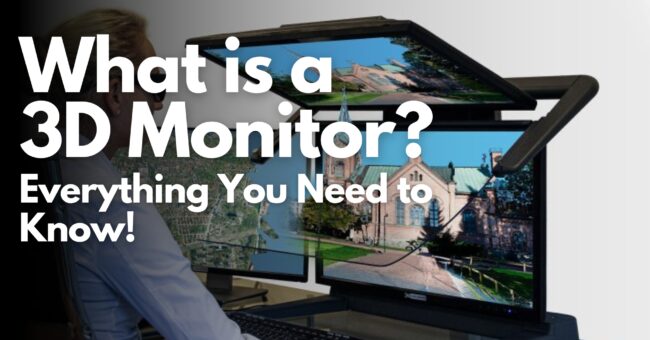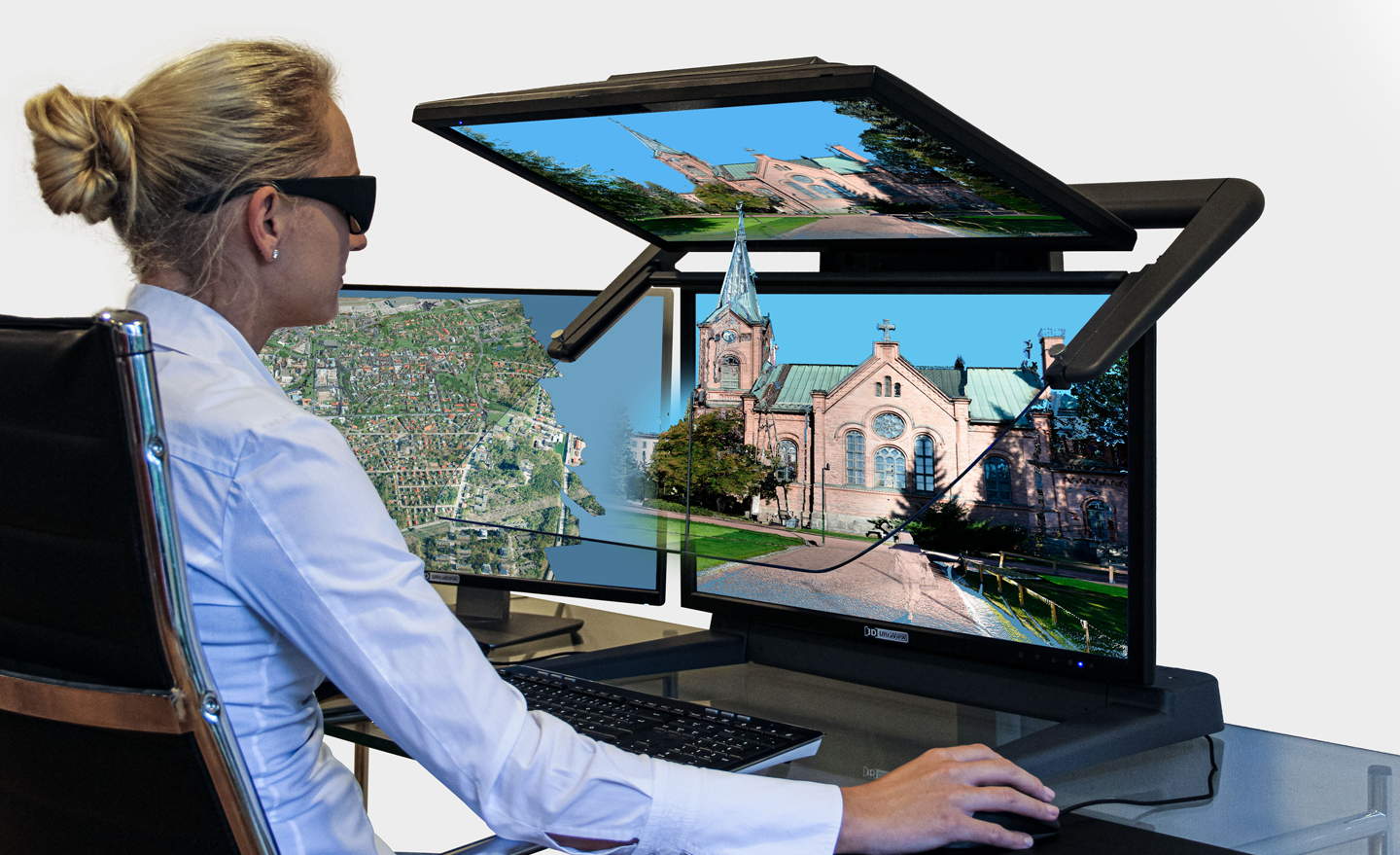



Today I’m going to show you exactly what is a 3d monitor and everything you need to know before buying a new one for geospatial usage!
Why I’m writing this because we helped many professionals grow their work efficiency by 48.55% over the last year!

So if you want to get higher efficiency, you’ll love this article steps in this guide.
Let’s get started.
Step #1: What is a 3D Monitor? How does it Work?
Step #2: What is the difference between active and passive 3d?
Step #3: What are the main Applications of 3D Monitors?
Step #4: What are the Benefits of 3D Monitors for GIS Professionals?
Step #5: Are 3D Monitors Harmful to Eye Health?
Step #6: How Much 3D Monitors Cost?
Step #7 Most Popular 3d Monitors for Professionals
3D monitors, designed to simulate depth through stereoscopic effects, offer an immersive viewing experience.

The basic technique of stereo displays is to present offset images that are displayed separately to the left and right eye. Both of these 2D offset images are then combined in the brain to give the perception of 3D depth.

These monitors showcase two distinct 3D technologies:
Especially, for geomatic engineers (Survey engineers) and GIS experts, these specialized displays utilize stereoscopic imaging technology to breathe life into maps, geographic datasets, and other visuals. The result is a heightened, interactive experience that enhances the way professionals engage with geospatial information.

Active 3D uses active shutter glasses to create the 3D effect and rapidly alternates between two different images, one for the left eye and the other for the right eye. The glasses are then synchronized with the display to block the corresponding eye’s view, allowing each eye to perceive the correct image with the illusion of depth.
Passive 3D utilizes polarized glasses to separate the left-eye and right-eye images. The display simultaneously projects two slightly different polarized images while the passive glasses, equipped with different polarization filters for each eye, ensure that each eye receives the correct image to generate a 3D visual experience.

3D monitors are used across a wide range of fields, from design and engineering to medicine and gaming. They play a significant role in various industrial applications. This extended list is provided to further understand and explore the diverse usage areas of 3D monitors across different industries.












3D visualization allows for a clearer understanding of terrain shape, geographic features, and object relationships. Even if you have a low-density point cloud, it gives you an immediate impression of the geometry in front of you!
Conducting data analysis in a 3D environment enables more precise results by considering factors such as height and depth. If the application has already advantage implementation of 3d cursor and you can go with the cursor immediately in depth of the application you want to target points.
It makes it very easy to clean up point clouds or mesh files. Even if you have this task in the BIM you can bring the virtual model that you working on with the real environment captured in a laser scanner or imagery.
3D models facilitate teamwork and information sharing among professionals from different disciplines.
3D visuals can be used to deliver project plans and research findings more effectively. Moreover, you can fly with the advanced controller through to the 3d model.
Using the 3d monitors allows you to make your critical decisions more clearly than before. So you have got a faster understanding of where you are! You will detect all the details that you don’t want to miss. Helps to improve your efficiency and decreases your risk to minimum levels.
There is no evidence that 3D monitors are harmful to eye health in general. However, some people may experience temporary symptoms such as eye strain, headaches, and dizziness, especially when using 3D monitors for extended periods. These symptoms are usually mild and go away on their own.

Passive 3D monitors are generally considered to be less straining on the eyes than active 3D monitors. This is because passive 3D monitors do not require special glasses that can cause eye fatigue. Additionally, passive 3D monitors do not flicker, which can also contribute to eye strain.
Here are some tips for reducing eye strain when using 3D monitors:
Overall, 3D monitors are not considered to be a significant risk to eye health. However, it is important to take breaks and use them in moderation to avoid eye strain and other symptoms.

3D monitors can be used passively or actively and have a wide range of applications including GIS mapping, Mechanical design, and gaming. These monitors enhance the viewing experience by providing users with a sense of depth, making content more immersive, and increasing functionality. As for prices, 3D monitors generally fall within the price range of $1000 to $15000. Prices may vary depending on basic features, additional functionalities, and brand.
And yes this is completely worth it to upgrade your work to the next level.
Finished reading the post and still scratching your head? Got any worries or questions?
Drop me a line in the comments or shoot me a quick message through my author page for a speedy reply!
Can’t wait to hear how I can help out.